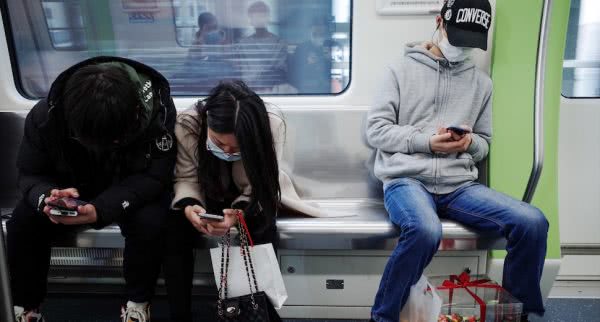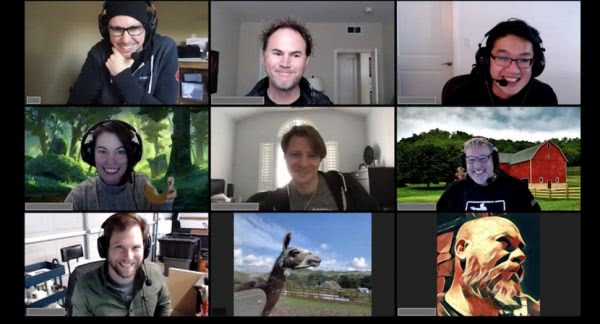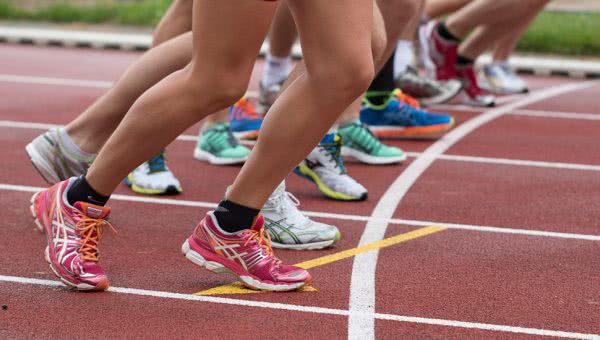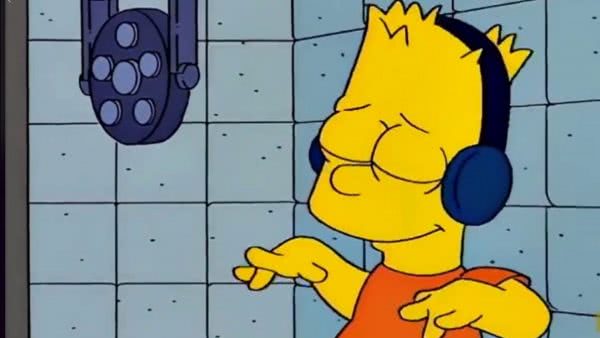Check out the top eight apps that got us through 2020, plus five apps we stopped using and said goodbye to for now.
This year has been a giant ball of changes and deviations from the norm, and one big transformation I’ve noticed in 2020 is how I’m now using my phone differently.
I never realised before, but last year (and all the years preceding), I mainly used my phone as an assistant while travelling. My favourite little smart device essentially acted as a tool to keep me entertained, informed, or assisted, while on the go.
This became even more obvious to me when I noticed my monthly phone bill reducing. Since I relied on my home wifi for the majority of my data use this year, not once did I ever have to pay extra for going over my data allowance. Hello positives of 2020!
Of course, I always have done and still do use my phone while physically stationary at home. But only now while taking stock of which apps I’ve started using in 2020, and which apps I’ve totally stopped using, did it become obvious how much more important my phone is to me while I’m out and about.

How often do you use your phone while you’re at home?
Besides the mind-numbing late-night scrolling of social media apps, and keeping in touch with friends and family via messaging apps like WhatsApp and Messenger (do people still actually send text messages anymore?!), I never really used my phone at home a lot.
In fact, I broke my phone right when lockdowns started being enforced around the world in March. And I went on to be without a phone for more than 60 days. Two whole months! Had we not been confined to spending most of our time at home, I know for sure I couldn’t have survived that long without a phone. But staying safe indoors with nowhere to go and still an iPad and laptop at my disposal? No problem!
When I did get my new phone, I noticed there were a lot of apps on my home screen which I no longer had any use for. And over the course of this year, there’s been such a change in how I’ve been using my phone, and what use my phone brings me now.
So, I’ve made a neat little list of the top 8 apps which have helped me through 2020, and the 5 apps that have dropped significantly in use on my behalf. Do you see any similarities in your app usage?
And did I mention, they’re all free?! Let’s get stuck in:
1. COVIDSafe app
Okay, this one doesn’t need much of an explanation. It’s pretty obvious why I never used this app before 2020 and why it’s an important app for me now, right?
Although I will add, I do find much pleasure frequently checking the app over time and seeing no exposures popping up.
You can download the app on iPhone and Android.
Now that’s covered, moving right along…
2. Zoom
Obvious app of 2020 number two. I was already using the Zoom app for work meetings with colleagues situated interstate or overseas. But only this year did I bother to load the videoconferencing app onto my phone (rather than just my laptop).
In 2020, Zoom also became an app that facilitated catch ups with family and friends, as well as a way to conduct more work meetings as everyone moved into home offices around the world. Over 100,000 universities and schools also began using it, as students continued remote learning from home.
So it comes as no surprise that I am one of 300 million people who use Zoom daily now, with the company more than doubling its annual revenue to $622 million in 2020.
You can download Zoom on iPhone and Android.

3. Letterboxd
With a lot more free time on our hands, many of us have spent a significantly larger amount of time in front of the TV this year. And early on in the year, I found this amazing app called Letterboxd. Now I use it almost every day.
The app describes itself as “a social network for sharing your taste in film”, offering users a platform to list, rate and review films as they watch them. You can also follow other users and find out what films they’ve seen, read their reviews and check out what’s on their watchlist.
For me though, Letterboxd hasn’t so much been a social platform, but rather the ultimate vessel to catalogue all the films I’ve seen and list all the films I want to watch. If you’re a lover of to-do lists, shopping lists, and just lists in general, you’re going to want to check this one out.
I love a good list. And ticking off the films after watching them and adding them to my Letterboxd list, has given me a small sense of accomplishment and completeness in this somewhat unfulfilling year.
Plus, the watchlist option, which provides a specific place to keep track of all the films you want to see one day, takes away one of the biggest pains of your Netflix viewing: choosing what to watch! Sometimes too many options are not a good thing, so having your watchlist ready to choose from saves a lot of the decision-making time.
You can check out Letterboxd on iPhone and Android.
4. C25K
C25K or Couch to 5K, is a running trainer app, designed to help non-runners like me build up their agility, stamina, and fitness, to be able to run for five kilometres.
This app is perfect for people who don’t like running, or those who struggle to commit to regular exercise. It follows a program whereby the runs change as you progress over time, but generally requires 30 minutes of your time for 3 days a week, for 8 weeks total.
The app guides you through your run, alerting you to run and to walk at intervals, created to build you up over the course. By the end you’ll be able to run for 5km in one go without stopping.
During 2020, this app became one of my obsessions. I was never into running, and to be frank, it still takes a lot of willpower to talk myself into going out for the run each day. But the feeling of accomplishment you get after ticking another run off and progressing to the next phase is so fulfilling. (I told you I liked lists…)
This app has been perfect for this year, as it forced me to get outside every day, even during lockdown – there’s no way you can do this from within your home, sorry! But it was the most encouraging app to get me out into the fresh air each day, which was much needed in this year of indoor life.
You can download the app and try it out yourself on iPhone and Android.

5. 7MWC
What’s with the fitness apps and all the acronyms? 7MWC, or 7 Minute Workout Challenge, is another app I’ve loved this year. It’s been perfect for the rainy days I couldn’t get outside to do my run, or for the in between days where no run was planned.
Again, this app is great for beginners, and is especially useful for those who don’t have a lot of space or equipment to workout.
The training app, as I’m sure you guessed, takes you through a seven-minute workout regime. It combines a total of 12 different exercises and guides you through the repetitions and movements, with video, audio, image and text instruction available for each drill.
The movements are all high-intensity bodyweight exercises, which can be done anywhere indoors or outdoors – the only equipment you need is a wall (or something solid to lean your back against) and a chair.
The app also helps keep you motivated with its activity calendar and results tracker, and also keeps a list of your achievements like “longest workout” (if you do multiple sessions in one go).
Download 7MWC on iPhone or Android and give it a go!
6. Zero
There has been a lot of hype about the value of fasting within the health and fitness industry lately, so I figured while I’m spending more time being sedentary in lockdown this year, I might as well give it a go.
There are so many fasting apps to choose from, so I went for the most obvious one: Zero. It’s the world’s most popular fasting app, and offers five different fasting schedules, plus the option to create your own custom schedule.
The app is essentially a timer that tells you when to stop eating and when to start eating again, tracking your efforts over time and displaying them in a nice little bar graph each week. You can also log your weight and sleep, read content from others who are fasting or professionals in the industry, plus complete little motivating challenges.
Fasting is not for everyone, but this app is a great place to kickstart if it’s something you want to try out. You can download it for iPhone and Android.
7. Doctors on Demand
I’ve never been one for online doctors, I’d rather go into the clinic to see my GP face to face. But with COVID-19 disrupting our usual activities, leaving home for something I could do online seemed pretty pointless. So I downloaded the Doctors on Demand app, and I’ve been so impressed!
The telehealth service is available 24/7 and allows you to book appointments with doctors and health professionals, generate medical certificates and prescriptions, and have them filled by pharmacies and shipped to you, all without leaving your house.
More than 87,000 Aussies use the Doctors on Demand service, and they’re partnered with over 3,000 pharmacies Australia-wide.
Although I’d still prefer to see my GP in person if something with my body needs physically assessing, the convenience, flexibility, and accessibility of this app has certainly changed my view, and I’ll never make an appointment for a simple prescription or medical certificate again!
You can download it on iPhone or Android.

8. Peak
I was taking care of my physical health during lockdown, but I hadn’t forgot about my mental health either. And one app that’s helped keep my brain stimulated this year, is Peak.
Peak is a brain training app where you essentially carry out quick daily workouts for your brain. The workouts come in the form of games and puzzles, designed to push your cognitive skills and challenge your memory, focus, language, coordination and problem-solving skills, among others.
The games are short and fun, and again give you a sense of accomplishment as you track your results over time and see your “Peak Brain Score” improve. After you complete each game, the app also informs you of where your results sit among other users your age. This can provide you with that extra push needed to improve and meet your peers’ capabilities, or reassure you your brain activity is at an optimum level.
Okay so maybe this app is just a guilt-free way to spend some time playing games on your phone, but there’s got to be a reason it’s ranked the number one app for your mind, and I’m totally on board.
Check it out and improve your brain skills on iPhone and Android.
5 apps I’ve stopped using in 2020
So now we’ve covered all the new apps that have shaped my life and how I use my phone in 2020, here’s a quick rundown on the apps I used to swear by and use daily, that are no longer significant in my life, and to be honest, could have been deleted early in the year.
RIP to following apps:
1. Apple Podcasts
I’m really sad about this one, and also very shocked. I stopped listening to podcasts in 2020, and I didn’t even realise.
On my public transport commute to and from the office every day, I would listen to podcasts to fill the time. I am a sucker for anything true crime; you name it, I’ve probably listened to it.
But since my commute time was cut down to zero when home became my office, I stopped listening to podcasts and didn’t even notice, until I came to write this article. And how sad; listening to these stories was a part of my day I loved, and they’d slipped out of my life without my knowing, simply because my routine had changed.
No longer do I need entertainment for my travel time, and I lack the astonishing capability to listen to a podcast while working (how do people do that?!), so my Apple Podcast app is one on the chopping board. Sorry to see you go!

2. Spotify
In short: same deal as above, but with music instead of podcasts.
I used to use the Spotify app on my commute, on days my brain didn’t have the mental capacity to pay full attention to the stories in the podcasts. Naturally, on those days, I switched to music to keep me occupied instead.
Don’t worry, I haven’t gone totally nuts, I still listen to music. Just not on my phone anymore. I use Spotify on my laptop with headphones when I’m working and play it through my speakers when I’m not.
But I’ve deleted it from my phone now. Had you told me a year ago I’d no longer have Spotify on my phone, I’d have told you you’re crazy.
3. Google Maps
This one is probably a bit self-explanatory. If you can’t leave the house and have nowhere to go, you don’t need a map to help you get there!
While I haven’t deleted the Google Maps app from my phone just yet, I certainly could have for many months throughout this year. I look forward to the time next year we can get out and about properly again and I’ll need to rely on my trusty maps app to give me the directions I need to get me where I’m going.
4. Public transport tickets
Another useful type of app when you’re on the go. But now since I essentially stopped catching public transport for the majority of this year, the app I used to buy my public transport tickets has been dormant for some time.
It’s become a waste of space on my phone, but was another prime example that helped me sense the theme and come to the realisation I mainly use my phone when out and about.

5. Rideshare and taxi apps
As with the reasoning of no longer needing a public transport ticketing app, in 2020 I stopped using all of my taxi and rideshare apps too.
I wasn’t going anywhere and even if I was, I definitely wouldn’t want to share a confined space with strangers in this year of extreme health alertness. So I deleted all of them.
As the number of apps used while out and about start to add up, you begin to realise you use your phone in different ways – ways in which you probably didn’t even consider before. I certainly didn’t.


































